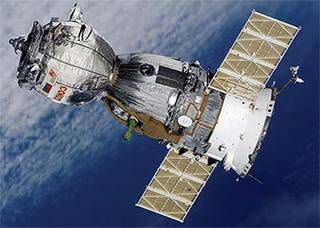Astronauts rocketing into space at 18,000 mph look incredibly chill about it

Blasting into space at nearly 18,000 mph seems unnerving. But three space station-bound astronauts appeared profoundly tranquil as they sped through Earth's atmosphere on June 6.
On Monday morning, European Space Agency (ESA) astronaut Alexander Gerst tweeted out a video shot inside the Soyuz spacecraft as he and two astronauts launched to the International Space Station. They traveled over 1,000 miles in under 10 minutes.
SEE ALSO: A woman sued NASA to keep a vial of moon dust. She might have made a huge mistake.
The three astronauts hunched over their controls in a cramped crew capsule. You can see it all in the video below: Gerst, the flight engineer, is seated to the right. In the middle is Roscosmos commander Sergei Prokopyev, and on the left is NASA's Serena Auñón-Chancellor.
The three astronauts appear mostly expressionless as they ride through the launch on the Soyuz rocket.
Besides their years of training, their calm is almost certainly aided by the rocket itself, which has flown mostly successful missions since its inception in the 1960s. There have been no deaths associated with either a Soyuz rocket or the Soyuz spacecraft since 1971, and these early deaths were due to accidents during the spacecraft's re-entry back to Earth — not during the launch.
Accompanying the three astronauts in the frame are a couple of stuffed animals. In the latter half of the video the toys begin to float, demonstrating when the spacecraft has entered the weightlessness of space.
Both NASA and ESA astronauts regularly hitch rides to the space station aboard 164-foot tall Soyuz rockets, as Russia's Roscosmos is currently the only space agency — public or private — with an operating spaceship capable of carrying astronauts to the station, some 250 miles above Earth.

Image: nasa
But both SpaceX and Boeing have developed crew capsules that will take future astronauts to the space station as early as 2019, assuming they meet safety requirements. NASA astronauts are already training in Boeing's Dreamliner and SpaceX's Dragon capsules in preparation for these launches.
Unlike the Soyuz rocket, the SpaceX Falcon 9 rockets are reusable. They'll return to Earth after launching astronauts into space rather than having to be completely rebuilt. The idea is to make space exploration, and visits to present and future space stations, considerably cheaper.
WATCH: NASA is attempting to fly a helicopter on Mars for the first time


